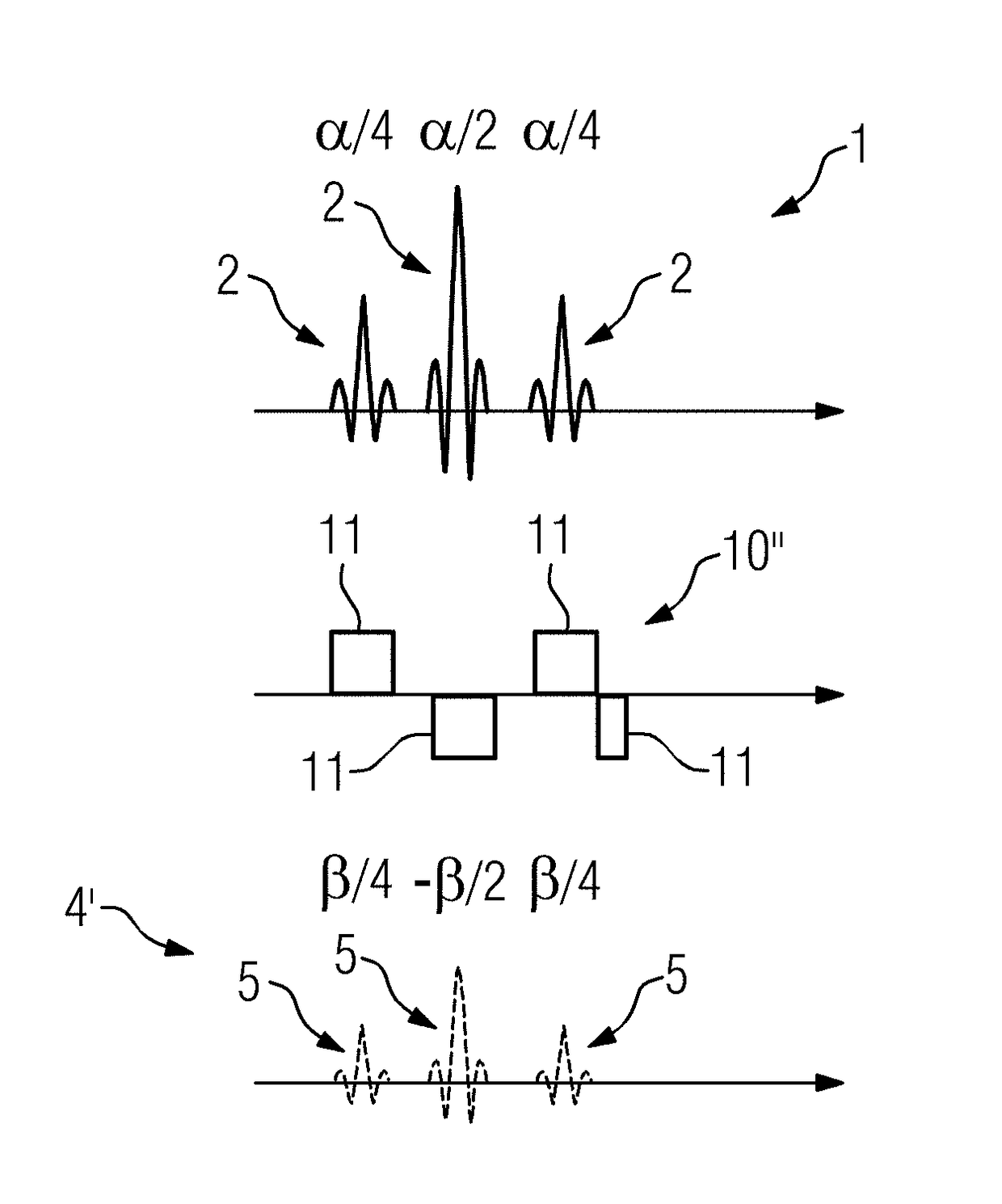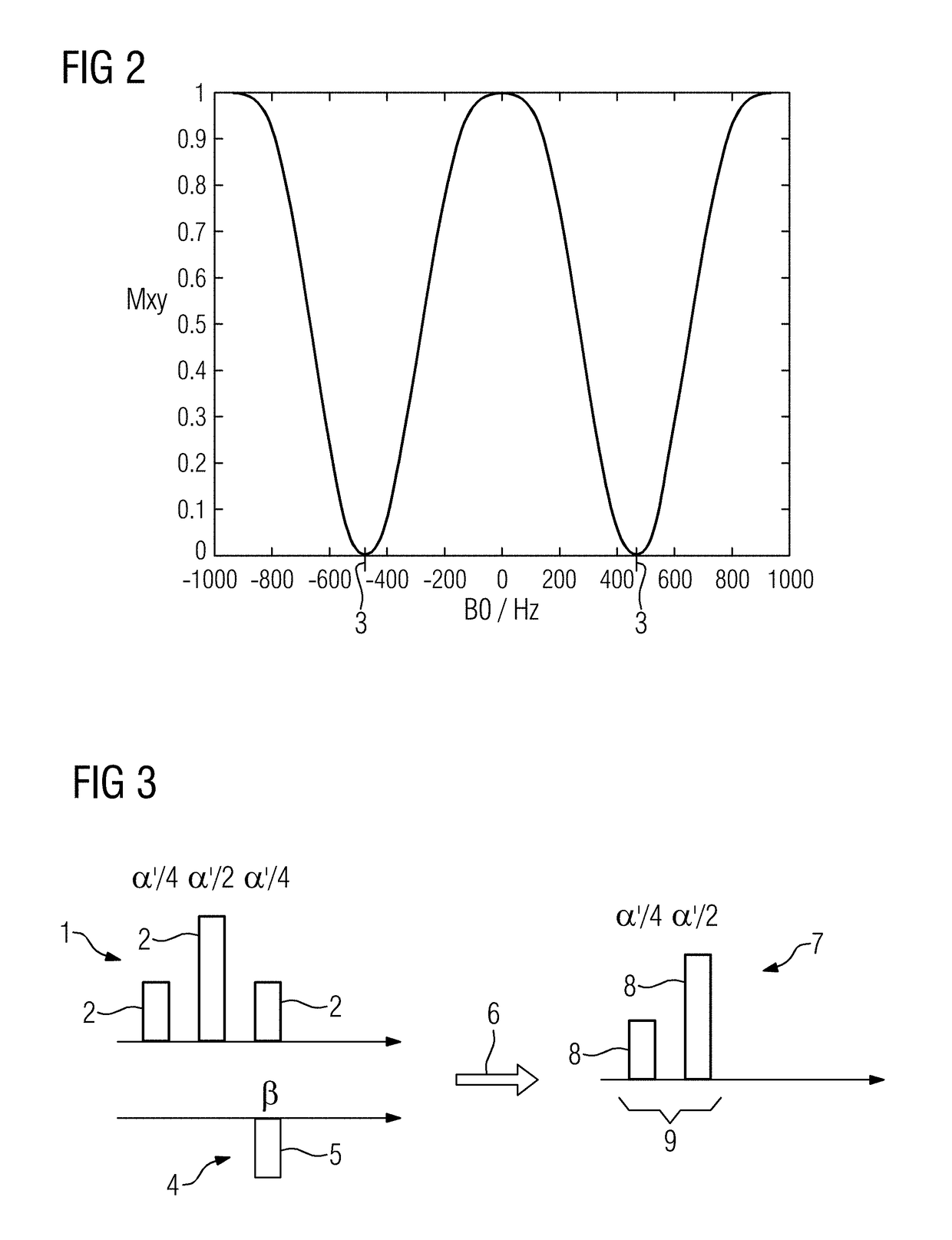Method and magnetic resonance apparatus for different degrees of excitation of two different nuclear spin types
a magnetic resonance apparatus and nuclear spin technology, applied in the field of methods, can solve the problems of complicated anatomical orientation, increased time, and difficulty in identifying small structures in water signal components, and achieve the effect of expanding the use of spectrally selective excitation
- Summary
- Abstract
- Description
- Claims
- Application Information
AI Technical Summary
Benefits of technology
Problems solved by technology
Method used
Image
Examples
Embodiment Construction
[0055]The following now describes different exemplary embodiments of the method according to the invention for spins of water-bound protons (hydrogen atoms) as a first spin type and spins of fat-bound protons (hydrogen atoms) as a second spin type. Herein, in the present case, the imaging is primarily intended to relate to the water spins, wherein signals of the fat spins are to be suppressed, although in the present case not completely, but only partially, in order, for example, to obtain an anatomical “context” in the case of orthopedic recordings. This means, the first spin type and the second spin type are each excited, but to different degrees, wherein the first spin type is to be excited to a greater degree than the second spin type.
[0056]Here, assumed in each case is water excitation, i.e. a spectrally selective excitation pulse sequence that only relates to water. Such an excitation pulse sequence 1 is depicted schematically in FIG. 1, wherein its individual excitation pulse...
PUM
 Login to View More
Login to View More Abstract
Description
Claims
Application Information
 Login to View More
Login to View More - R&D
- Intellectual Property
- Life Sciences
- Materials
- Tech Scout
- Unparalleled Data Quality
- Higher Quality Content
- 60% Fewer Hallucinations
Browse by: Latest US Patents, China's latest patents, Technical Efficacy Thesaurus, Application Domain, Technology Topic, Popular Technical Reports.
© 2025 PatSnap. All rights reserved.Legal|Privacy policy|Modern Slavery Act Transparency Statement|Sitemap|About US| Contact US: help@patsnap.com



